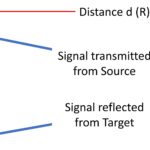Most robots incorporate a broad range of sensing technologies to better understand the operating environment and to fulfill their design purpose. These sensors provide information about position, size, orientation, velocity, distance, temperature, weight, force, and more. For collaborative robots or cobots that operate in a close proximity to and even interact with humans, additional sensing technologies may be required.
In many instances, the cobot is programmed to operate in predefined, restricted space and execute predefined motions and actions. In contrast, human operators have much more flexibility and, in some cases, unexpected actions or reactions.
Unlike traditional robots where sensing/detecting the presence of a human within a predefined space or an unsafe distance could immediately trigger a slow down or safety stop, cobots proximity to humans dictates a different approach depending on the type of interaction with the human. The initial consideration for cobots could be to use ultrasonic or infrared sensors and a time-of-flight sensing technique to determine proximity.
However, with safety being a primary concern, adding advanced sensing techniques that are commonly used in vehicular advanced driver-assistance systems (ADAS) to prevent accidents, injuries and even death could avoid on-the-job issues. While science fiction writer Isaac Asimov may have created the Three Laws of Robotics, where the First Law is “A robot may not injure a human being or, through inaction, allow a human being to come to harm,” it is the robot or cobot designer that ultimately implements sufficient sensing technology to ensure that the First Law is not violated. In vehicles, radar, LiDAR, and advanced camera systems provide the advanced sensing techniques.
Radar
One company offers smart motion radar sensors based on modern network technology and artificial intelligence (AI). The radar sensors provide a reliable and highly precise solution for collision avoidance. With these sensors, the system can detect human movements in operating environments with cobots and deliver measuring precision in the micrometer range.
LiDAR
While radar is widely used in automotive systems for ADAS applications and more, the same is not true for LiDAR since the cost of creating 3D maps is prohibitive. However, in a factory or similar application, 2D LiDAR operates by scanning only in a single plane to provide a two-dimensional representation of an environment. This significantly reduces costs while still offering accurate mapping capabilities.
The simplified 2D LiDAR design allows for mass production at a lower cost and makes them more accessible to a wider range of industries and applications. Still, the 2D LiDAR approach can deliver a 45-Khz sampling rate, 270° field of view, and 14m (40m effective) detection range.
Smart Cameras
Another company’s system uses up to eight 3D cameras to create a merged point cloud for 3D mapping. In operation, the system detects unknown objects including humans and generates paths to avoid any contact. The use of specialized software enables the cobot to evaluate millions of alternative motion paths and choose the optimal route to avoid a collision before making a move – all within milliseconds.
Since they are intended to interact with and assist humans, combinations of different sensing techniques could be used in a cobot depending on the type of activities and interactions that occur between the cobot and human co-workers.
References
50% more productivity for cobots – with smart motion sensors, https://ondosense.com/en/smart-motion-radar-sensors-cobots/
How 2D LiDAR is Revolutionizing the Robotics Industry, https://cdn.neuvition.com/media/blog/how-2d-lidar-is-revolutionizing-the-robotics-industry.html
Collision avoidance technology makes cobots even more productive, https://engineeringshop.nl/en/news/cobots_more_productive/



